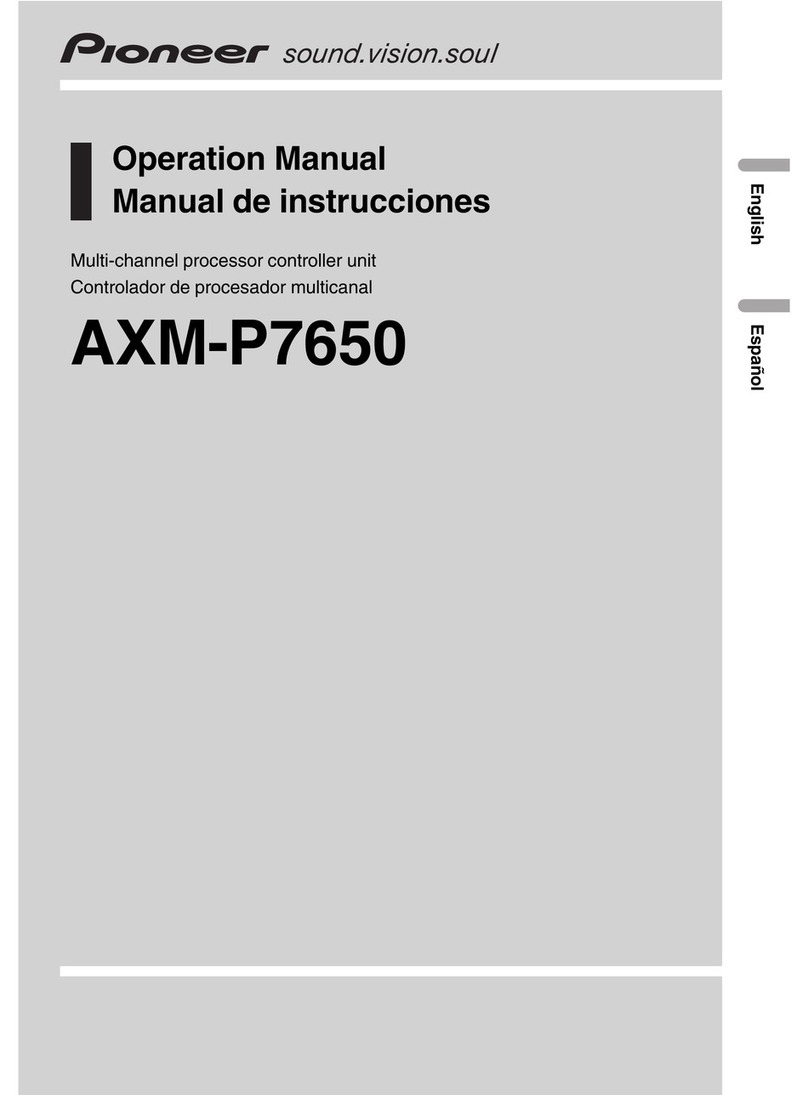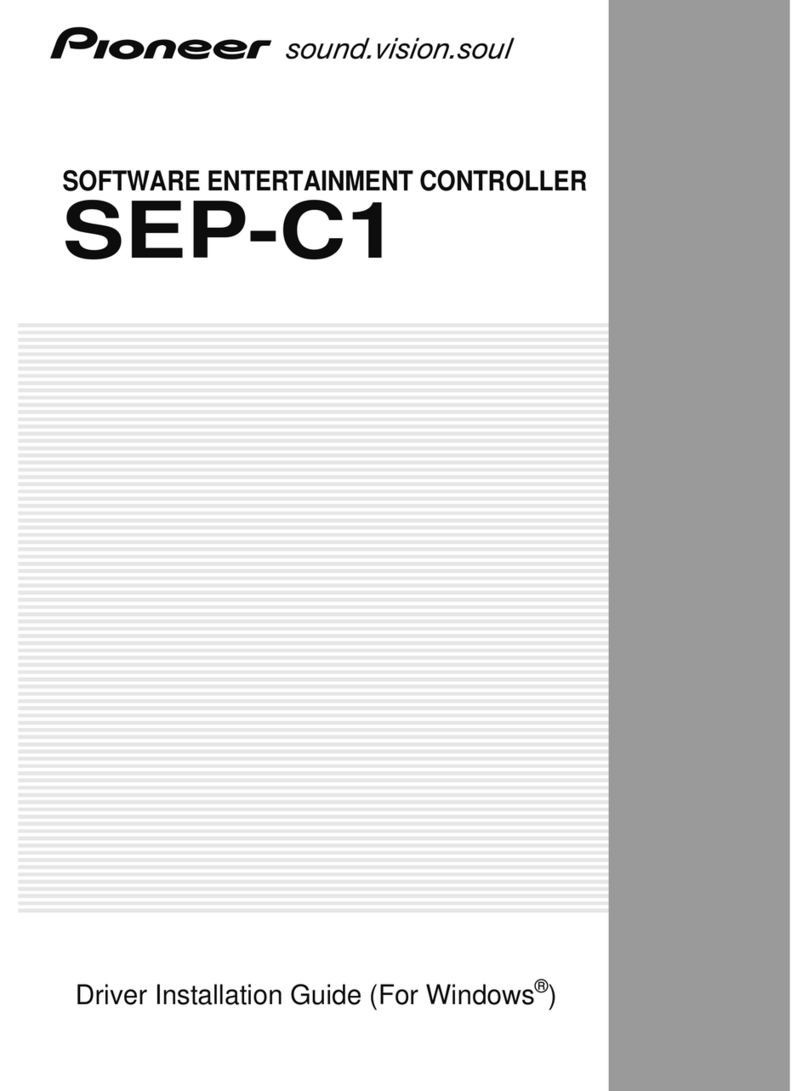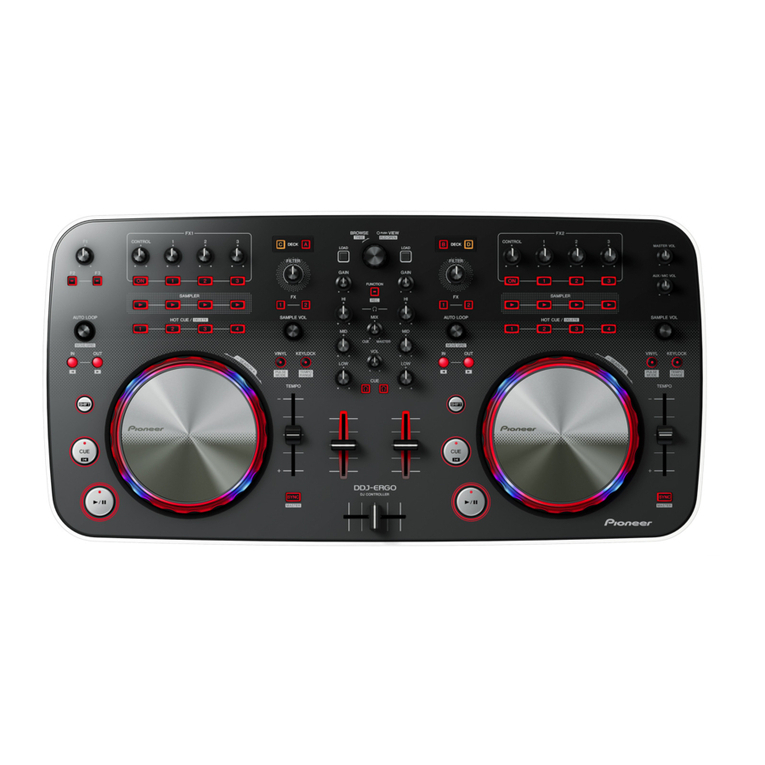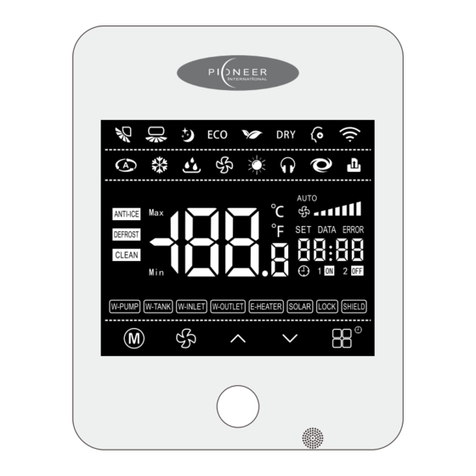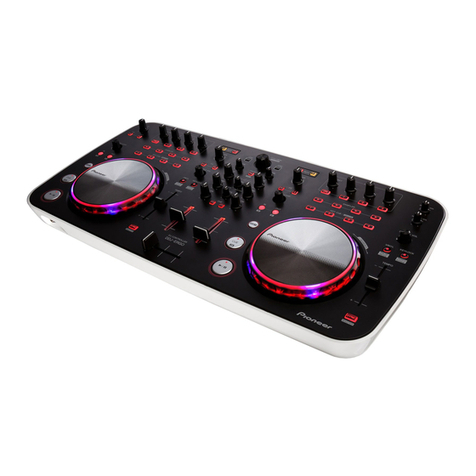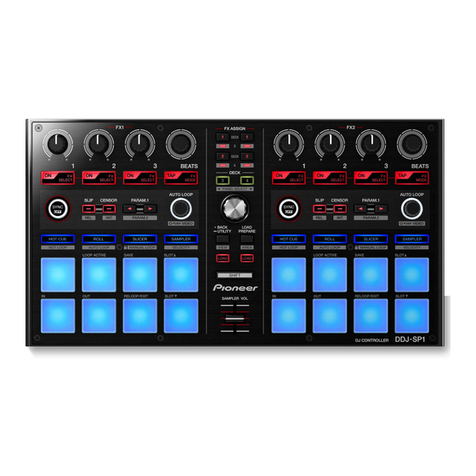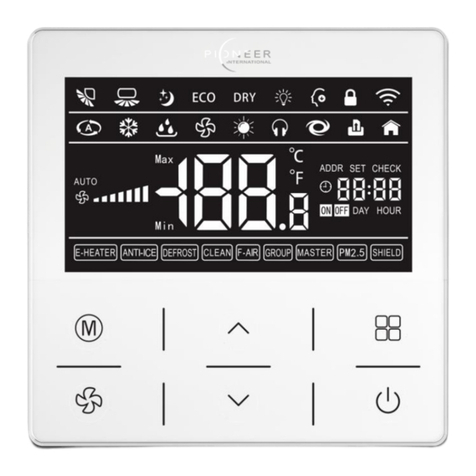
3
DDJ-RB
56 7 8
56 7 8
A
B
C
D
E
F
CONTENTS
SAFETY INFORMATION.......................................................................................................................................................... 2
1. SERVICE PRECAUTIONS.................................................................................................................................................... 4
1.1 NOTES ON SOLDERING ............................................................................................................................................... 4
1.2 NOTES ON PARTS REPLACEMENT............................................................................................................................. 4
1.3 SERVICE NOTICE.......................................................................................................................................................... 4
2. SPECIFICATIONS................................................................................................................................................................. 5
3. BASIC ITEMS FOR SERVICE .............................................................................................................................................. 5
3.1 CHECK POINTS AFTER SERVICING ........................................................................................................................... 5
3.2 JIGS LIST ....................................................................................................................................................................... 6
3.3 PCB LOCATIONS ........................................................................................................................................................... 6
4. BLOCK DIAGRAM ................................................................................................................................................................ 7
4.1 OVERALL CONNECTION DIAGRAM............................................................................................................................. 7
4.2 OVERALL BLOCK DIAGRAM......................................................................................................................................... 8
4.3 POWER BLOCK DIAGRAM ........................................................................................................................................... 9
5. DIAGNOSIS ........................................................................................................................................................................ 10
5.1 POWER ON SEQUENCE............................................................................................................................................. 10
5.2 TROUBLESHOOTING.................................................................................................................................................. 11
5.3 MONITORING OF POWER SUPPLY AND VOLTAGE.................................................................................................. 18
5.4 ABOUT POWER-SAVING MODE................................................................................................................................. 19
5.5 OPERATION CHECK WITH rekordbox ........................................................................................................................ 20
6. SERVICE MODE ................................................................................................................................................................. 23
6.1 TEST MODE................................................................................................................................................................. 23
7. DISASSEMBLY ................................................................................................................................................................... 35
8. EACH SETTING AND ADJUSTMENT ................................................................................................................................ 42
8.1 NECESSARY ITEMS TO BE NOTED........................................................................................................................... 42
8.2 UPDATING OF THE FIRMWARE ................................................................................................................................. 43
8.3 ITEMS FOR WHICH USER SETTINGS ARE AVAILABLE........................................................................................... 45
9. EXPLODED VIEWS AND PARTS LIST............................................................................................................................... 46
9.1 PACKING SECTION ..................................................................................................................................................... 46
9.2 EXTERIOR SECTION .................................................................................................................................................. 47
